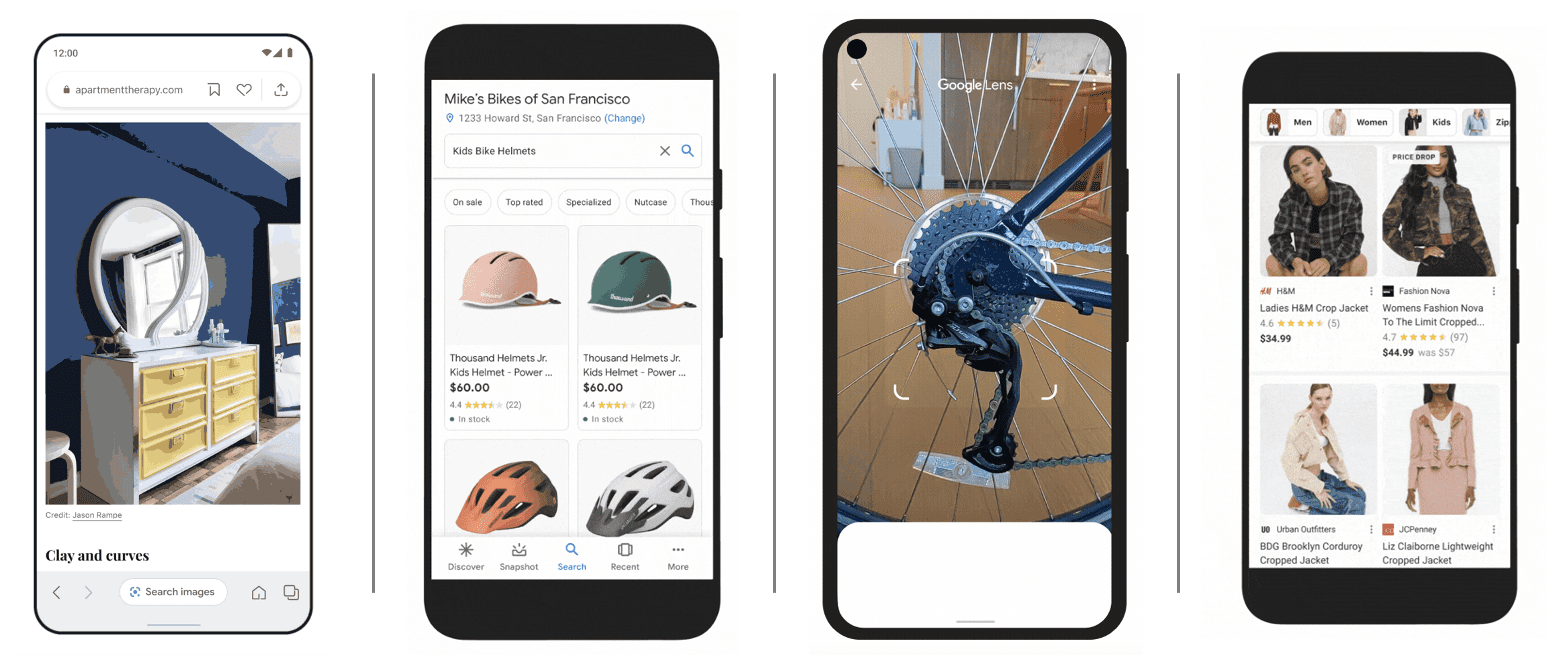How often do you go shopping on Google? If your answer is “Never,” you’re not alone. Google is feeling the heat from Amazon’s rise as an e-commerce giant. Most product searches begin on Amazon, not Google. Amazon is easily the Number One online retailer, and that’s saying something at a time when e-commerce growth overall has accelerated by five years. And throughout the past few years, Amazon has been building on all that search and purchase activity to create a gold mine of customer data that it has used to develop a thriving advertising practice. Although Google remains the largest online advertising company, Amazon is coming on strong. All this is why Google announced a major change September 29 to compete more effectively with Amazon.
What Google Announced
Google announced that it is:
- Making online searching and shopping more visually appealing by emulating the product display features you see on Amazon. For certain items such as apparel, Google will return search results with a product results that page that resembles a visual store, not a list of links and text descriptions.
- Soon introducing a new way to search visually, with the ability to ask questions about what you see. According to a Google blog post, “With this new capability, you can tap on the Lens icon when you’re looking at a picture of a shirt, and ask Google to find you the same pattern — but on another article of clothing, like socks. This helps when you’re looking for something that might be difficult to describe accurately with words alone. You could type ‘white floral Victorian socks,’ but you might not find the exact pattern you’re looking for. By combining images and text into a single query, we’re making it easier to search visually and express your questions in more natural ways.”
- Including in search a feature, “Things to know,” that will make it easier to explore and understand new topics. For example, if a person searches for “acrylic painting,” Google understands how people typically explore this topic, and shows the aspects people are likely to look at first though “Things to know.” Google says it can identify more than 350 topics related to acrylic painting in this example.
- Introducing a new experience that identifies related topics in a video, with links to easily dig deeper and learn more. Per Google, “. . . we can even show related topics that aren’t explicitly mentioned in the video, based on our advanced understanding of information in the video.” Interestingly, Bill Ready, Google’s president of commerce, told the Wall Street Journal that Google “wants to stitch e-commerce across Google’s entire suite of offerings from search to maps to YouTube. Mr. Ready envisions people watching a YouTube video of someone unboxing new apparel and viewers being able to click nearby to purchase the items, or being served an ad on Google Search if they later look for the clothes.”
What Advertisers Should Do
- Capitalize on Google’s advertising tools that are designed to be more visually appealing. For instance, Google recently rolled out Discovery ads, which are image-rich ads designed for a more “laid back” search experience (more about that here). Google is clearly doubling down on the visual web, and advertisers should expect more visually appealing ad products as it attempts to become a stronger e-commerce player.
- Take a closer look at video advertising and organic content sharing, given Google’s interest in building out a more robust search experience on YouTube. Earlier in 2021, we predicted a surge in online video consumption, a reality that has been borne out during the pandemic.
- Make use of more tools that make it easier to connect online searching and shopping. Google isn’t the only company figuring out search and commerce. Instagram is another, as we discussed in a blog post recently. And there are many more apps doing the same thing.
- Do a gut-check with your organic search team. How well are they aligning content with visual search, for example? How will Google’s “Things to know” feature affect the depth and breadth of content that you provide on your website, Google My Business listing, and elsewhere?
- Keep your eyes open and your budgets flexible. The online advertising space is getting more competitive and interesting for retailers. We have been blogging about the rise of Amazon Adverting for some time – as well as the growth of advertising services from retailers such as Macy’s, Walmart, and Walgreens. They’re all using their first-party customer data to build online advertising platforms. Depending on your target audiences, they may provide very competitive alternative to Google – an example being Macy’s for fashion-conscious shoppers or Walmart for advertisers whose audience aligns with Walmart’s multi-channel customer. (And we can help you succeed on all these platforms.)
Contact True Interactive
To succeed with online advertising, contact True Interactive. Read about some of our client work here.
